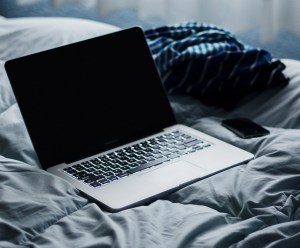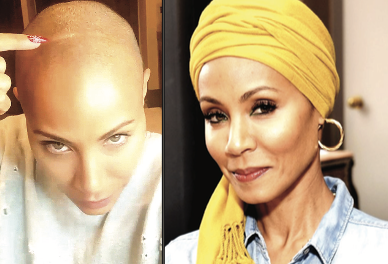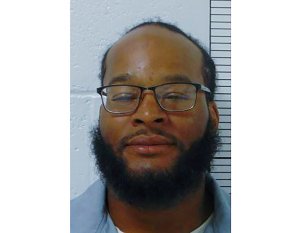
By Mylika Scatliffe,
AFRO Women’s Health Writer,
mscatliffe@afro.com
Kimberly Maker, 53, used to be skeptical about the world of sleep study. In the beginning she didn’t believe in it– thinking it was a fictitious field of medicine.
Given her opinions about the field at the time, she ignored her primary care doctor’s advice to undergo a sleep study for about a year.
But after struggling with a variety of health issues, including a diagnosis of prediabetes, Maker decided she wanted to shift to a more holistic way of health maintenance. This change in course led her to finally agree to the sleep study.
And it changed her life, her health, her perspective, and her career.
These days, if there is anything she wants everyone to know–especially Black women–it’s the importance of proper rest and the many ways technology is doing us a disservice in the sleep department.
Wake up, everybody!
The data on technology and how it impacts everyday life is no joking matter.
According to the Pew Research Center regarding technology usage per household that report:
- 84 percent of American households have at least one smartphone and 80 percent have at least one laptop, desktop, and smartphone in the same household
- 68 percent have at least one tablet, and 39 percent have at least one streaming device – such as Apple TV or Roku
- One third of households have three or more smartphones
- All together nearly 90 percent of households have at least one device, with the median household having five
- Nearly 18 percent of households are ‘hyperconnected,’ or have 10 or more of these devices
“We’re exposing ourselves to too much blue light,” Maker said. “We’re spending too much time staring at screens, we’re working too much, not getting enough sleep, and it’s killing us!”
Blue light is composed of electromagnetic radiation, an invisible form of energy. Blue light is a portion of the visible light spectrum that can affect alertness, hormone production, and sleep cycles. This type of light is emitted from some types of light fixtures and many electronic devices.
The late night, blue light special
According to the Sleep Foundation, “when compared to Whites, Black adults are almost twice as likely to describe sleeping too little and are 60 percent more likely to report sleeping too much.
Roughly 40 percent of single parents sleep less than seven hours per night compared to 32.7 percent of adults in two-parent homes and 31 percent of adults with no children.”
Scientific evidence, according to the Center for Disease Control and Prevention (CDC) suggests sleep is a basic need for life, similar to the need to eat and drink. Proper sleep is a restorative bodily function and not getting enough has negative health consequences.
According to a study conducted by the National Sleep Foundation’s “Sleep in America” poll, “90 percent of Americans report using an electronic device in their bedroom within an hour of trying to fall asleep.”
Overexposure to electronics and the blue light they emit disrupts the way our bodies function and regenerate.
The National Sleep Foundation defines circadian rhythms as “finely tuned, 24-hour cycles that help our bodies know when to carry out essential functions. Light is the most important factor in aligning circadian rhythms and for much of human history, these rhythms were closely aligned with sunrise and sunset.”
.Most of our blue light exposure is from the sun.
During daytime hours, sunlight is essential for optimal performance and attention span, and the proper amount, and timing of sunlight exposure prepares us for better sleep at night.
Significant technological advances over the last quarter century means more exposure to artificial light and electronics, and people are increasingly exposed to higher amounts of light before sleeping.
Circadian rhythms are largely affected by blue light.
Maker says Black people already deal with a plethora of health disparities–but sleep architecture is something we can control in many cases.
Maker, passionate about phenomena of sleep and its benefits, shared that at age 50 she switched careers and began to spend her time convincing several of her friends to follow suit.
Today, she’s a sleep technician at the University of Pittsburgh Medical Center in York, Pa., where she witnesses in real-time what the average person wouldn’t be aware of unless, of course, they participate in a sleep study.
In her new position, Maker orchestrates and performs sleep studies for patients. Some people have physical disorders that obstruct sleep, like apneas or enlarged tonsils, but she also sees first-hand the negative effects of the mismanagement of technology on sleep.
Maker described a 13-year-old patient undergoing a sleep study at the clinic. His mother was concerned with his fatigue and agitation upon waking every morning, after being allowed to sleep all night –every night– with the TV on.
Most people can accept that lack of sleep has been linked to improper diet, attention deficit hyperactivity disorder, obesity, metabolic disorders and depression, but like Maker, now her patients are discovering what’s unfortunately painfully obvious.
“We are not doing a good thing– especially as relates to our children– with all this constant exposure to technology,” Maker inclusively admits. “It never occurred to [the mom] that all that night exposure to the television could be a problem.”
The most common sources of blue light include smartphones, televisions, computer screens, tablets, e-readers, video game consoles, and fluorescent and LED lights. In one form or another we’re exposing ourselves to these items almost 24 hours per day.
We work in office buildings with fluorescent light fixtures and sometimes not enough windows. Almost any type of work today involves some exposure to a computer screen at some point during the day. Many jobs require looking at a computer screen all day– sometimes multiple monitors at once! During breaks from work screens, we take out the screen in our pocket and begin scrolling social media feeds on smartphones.
We come home at night and watch television, and wind down at bed time by scrolling through more social media feeds or delving into our favorite book on an e-reader. or tablet. The nighttime exposure to blue light tricks our brains into thinking it’s still day time. Our circadian rhythms are thrown off, leaving us in a state of wakefulness instead of sleepiness, leading us to not get the sleep we should.
Sleep saves lives– go get some!
The good news is that mitigating the effects of blue light overexposure is relatively easy and quick. Most of the blue lights that cause problems are coming from artificial sources, and they can simply be turned off.
The National Sleep Foundation recommends the following:
- Turn off electronics two to three hours before bedtime.
- Use a dimmer setting or “night mode” if your device has one. They reduce the emission of blue light.
- If you need to use devices before bed, try one of several available apps on smartphones and computers that help reduce blue light emission.
- Improve your sleep environment. If there are light sources you can’t dim in your bedroom, try using a sleep mask to block them out.
“We don’t even allow patients to have smartphones or other devices in the sleep clinic because holding phones corrupts the studies,” Maker said.
Completing a sleep study and reducing her exposure to technology in the sleep environment was a game changer for her and so many people she’s connected with since her career switch.
“I’m not cranky in the mornings, I feel better, I’m not snoring as much,” she said. “Now I’m a believer.”
Help us Continue to tell OUR Story and join the AFRO family as a member –subscribers are now members! Join here!
The post Sensory overload: are tech devices affecting your sleep? appeared first on AFRO American Newspapers .










